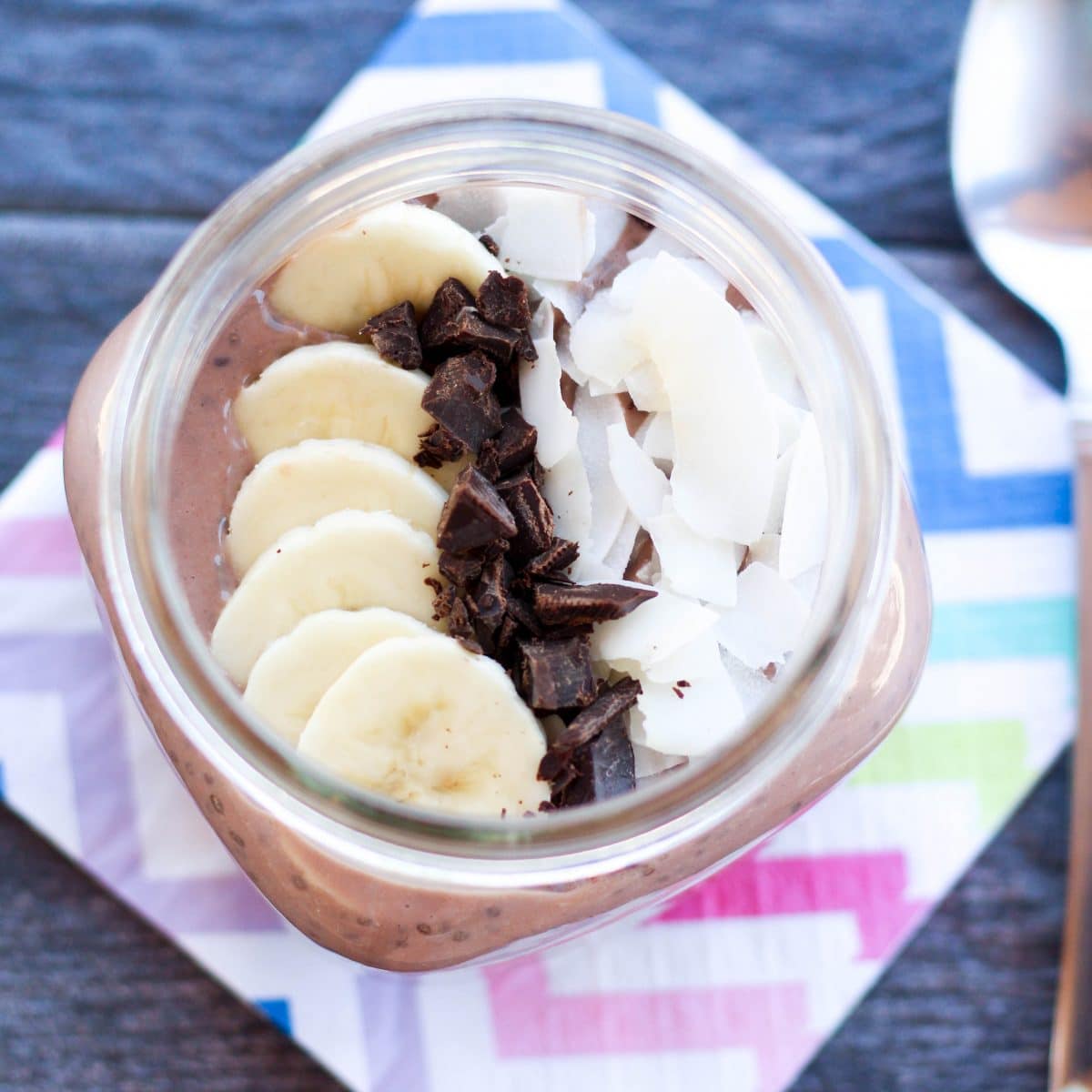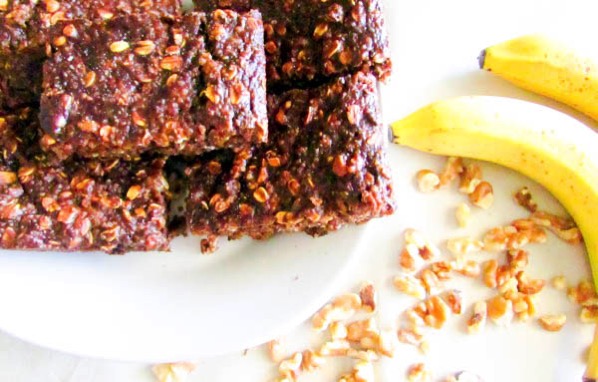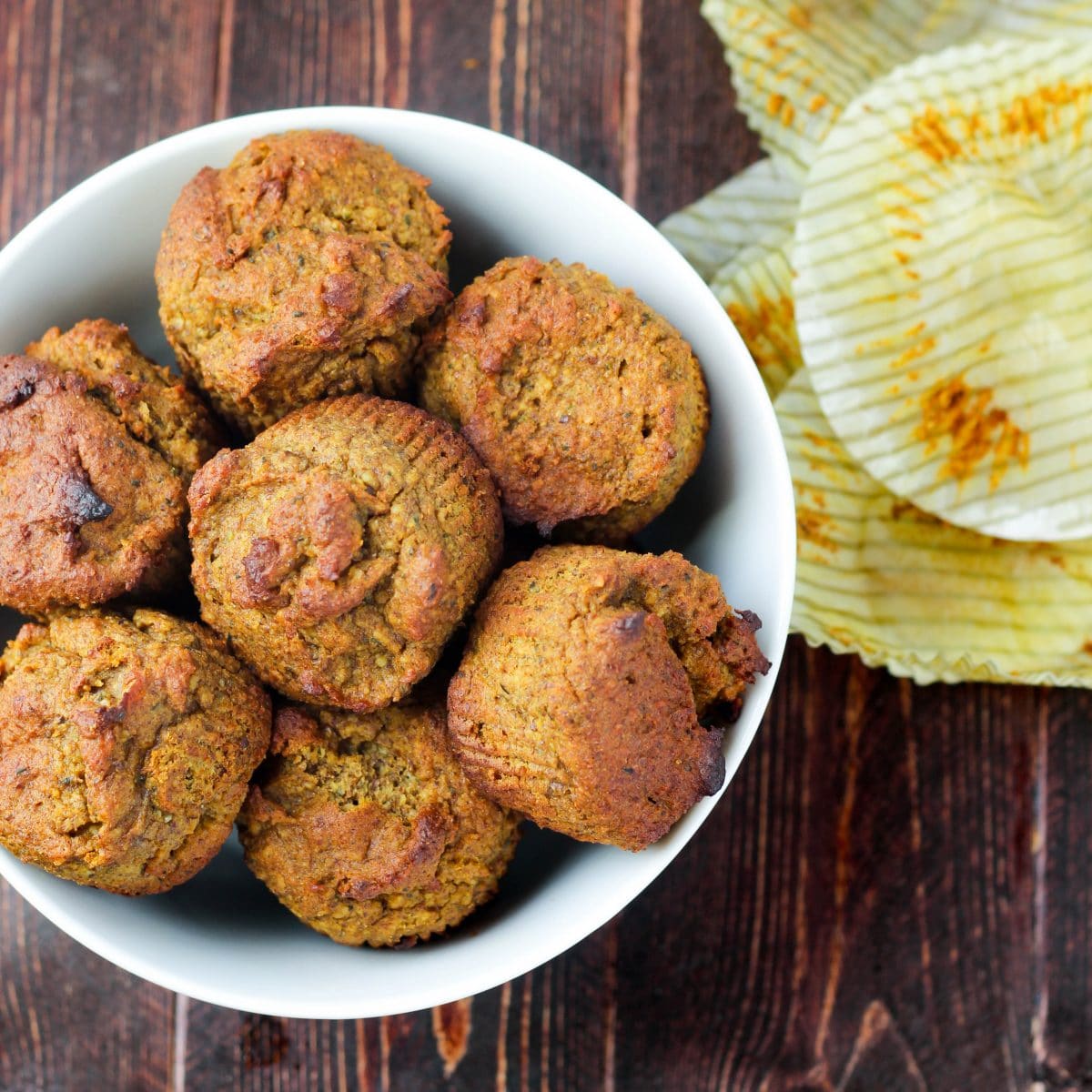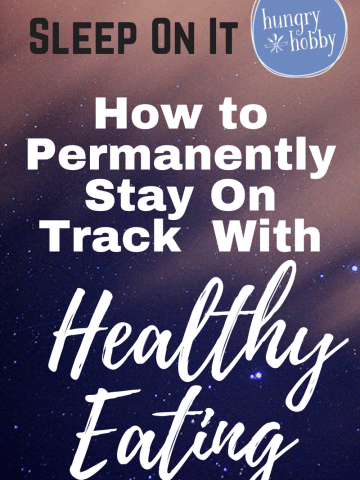Hi, Friends! How did week 5’s include a healthy fat challenge go? It was great to read your comments about how incorporating more healthy fats into your diet is helping you feel great! Healthy fats are my favorite, I definitely had a good mix of cheese, avocado, yogurt, cottage cheese, almond butter, and sunflower butter over the last week! This week I decided to up my game and buy whole milk cottage cheese instead of the 2% that I normally buy. I’ve been thinking about it since I had this amazing cottage cheese in California over Christmas (which I somehow didn't take a picture of but it was amazing). Totally the best upgrade ever, the creaminess makes it all the more satisfying. The weird thing was, usually I need some sort of hot sauce in it, but with the full fat all I need was a spoon and the willpower to try and not devour the whole thing!
In honor of heart health month, I figured we would continue the topic of healthy fats for this week’s healthy habit with the topic of Omega 3s! I’ve really wanted to do a blog post on Omega 3s since I posted about taking a Multi-Vitamin, so I'm excited to finally be sharing with you the importance of getting enough Omega 3s!
First! This post will talk a great deal about inflammatory versus anti-inflammatory responses in our bodies. If you need some clarification on that topic I highly recommend you read my post: What is Inflammation and then come back! Okay here we go!
What is an Omega 3?
Omega 3 and Omega 6s are special types of a group of fats know as PUFAs (Polyunsaturated fats.) These fats contain multiple double bonds (poly = many), omega 3/6s are unique in that they have double bonds at the third and sixth positions respectively. Do to their special chemical structure they are more fluid like and flexible, but also a bit delicate and more likely to be susceptible to damage.
Types of Omega 3’s?
ALA (alpha-linolenic acid)
ALA has two primarily functions 1) to provide energy (like all fats) 2) to convert into EPA and DHA (see below.) However, in humans, this conversion has been shown to be relatively inefficient (1).
EPA (eicosapentaenoic acid)
EPA is the number one food source we have to fight inflammation because it will eventually help produce certain prostaglandins. Prostaglandins are little chemical messengers (I think of them like text messages) that signal an anti-inflammatory response in the body.
DHA (docosahexaneoic acid)
DHA plays an important role in brain health and development. Last week I mentioned that 60% of your brain (by weight) is made up of fat, well almost ⅓ of that (about 15-20%) comes from DHA. Therefore, DHA is thought to be vital for optimal brain development and functioning.
The War On Chronic Inflammation: Omega 3's vs. Omega 6's
On the other hand, Omega 6 fatty acids tend to create chemical signals (or text message prostaglandins) that are inflammatory in nature. In certain cases, this is absolutely necessary (like breaking a bone, infection, or even recovering from a workout). However, chronic excessive inflammation is thought to be a root cause of many chronic conditions people are battling today, including but not limited to: chronic pain, autoimmune conditions, heart conditions, cancers, and metabolic dysfunctions. (Again, for more information please see What is Inflammation.)
The consumption of omega 6 to omega 3 is thought to be optimal around 4:1, but the typical western diet is closer to 15:1, even a heath conscious diet is estimated around 10:1. A few major sources of Omega 6s include soybean oil, sunflower oil, corn oil, and cottonseed oil. These foods are often found in processed foods. This is where so many of my Hungry Hobby RD clients get confused. Really crap processed food that was classic in the nineties, the stuff we know is bad for us contains vegetable oil or hydrogenated oil. Omega 6 oils, such as mentioned above, are found in "healthy" processed foods like whole grain crackers, plantain chips, etc. Many of our lifestyles dictate the necessity of these healthy convenience products rich in Omega 6 oils, so the become over-exaggerated in our diets and proportionately there is an under abundance of Omega 3s. Even worse, higher consumption of Omega 6 may further limit the already inefficient conversion of ALA to EPA & DHA.
How To Get Enough Omega 3 Fatty Acids
Food Sources
Food first, always always always, food is king. You will always get the most absorption and use out of food. Incorporate as much Omega 3 into your diet as possible with these additions.
Sources of ALA:
- flax (ground, oil, milk, whole seeds are not digested by humans)
- chia seeds
- walnuts
- hemp seeds/oils
- omega 3 eggs
You guys know these are about my favorite foods ever to put in ALL THE THINGS. Check out a few ideas:
- Smoothies --> check out my recipe index for smoothie ideas, add chia seeds to thicken any smoothie
-
Chia Pudding

-
- Chocolate Coconut High Protein Chia Pudding (GF, Vegetarian) *shown above
- Dark Chocolate Sun Butter Chia Pudding (Vegan, GF, Paleo)
- Protein Chia Pudding (GF, Vegan Option)
- Butterfinger Chia Pudding (Vegan, GF)
- Chia Parfaits (GF, Vegetarian)
Oatmeal
- Anti-Inflammatory "Instant" Oats (shown above)
- Angel Food Cake Oats
- Four Ways to Make High Protein Overnight Oats
-
Walnuts

- Walnut Pesto (GF, Vegetarian)
- Walnut Pesto Turkey Burgers (GF)
- Banana Walnut Quinoa Bars (Vegetarian)
- Walnut Protein Balls (Vegan, GF)
Baked Goods

- Superseed Muffins (Paleo - Gluten Free, Dairy Free, Vegetarian) * shown above
- Ultimate Superfood Breakfast Bars (Vegan, GF)
- Paleo Cinnamon Raisin Bread
- Coconut Almond Banana Bread (Paleo)
- Chocolate Chip Pumpkin Muffins
Main Dishes

2. Sources of EPA/DHA:
both are found in fish/fish oils, DHA is often added to foods (fortified dairy typically) and found in seaweed.
- Salmon

- Baked Garlic Dill Salmon
- Silverbrite Salmon in Honey Mustard Pan Sauce
- Smoked Salmon Cheddar Melt
- Salmon Hummus Wrap
- Easy Spicy Salmon
- Tuna (see special notes about canned tuna in this post)
- Shrimp (aka my favorite food ever is a great source of EPA & DHA)
- Healthy Shrimp Paella (Paleo) *shown above
- Kale and Shrimp Omelet
- Shrimp Enchilada Spaghetti Squash Boats
- Shrimp Recipe Round Up & Health Benefits of Shrimp
-
Sardines
-
Most Other Fatty Fish (here is an awesome PDF I found.)
-
Seaweed (DHA)
Supplements
Trainers, clients, friends, family always want to know if fish oil is real or just another snake oil? Personally, I take a fish oil supplement and I usually recommend my clients take them as well. I like to think of them like a Multi, an insurance policy for optimal health. Do I think that you absolutely need them to live a healthy happy life? Probably not, I don’t think you need any supplement for that. However, research is revealing that systemically fighting inflammation may be one of the most protective things you can do for your body with the least amount of risk. So until I’m presented with a considerable amount of research that says otherwise, I recommend it for optimal health. Here are a few considerations:
1) Make sure the supplement you are considering has a high concentration of EPA/DHA. My current favorite recommendation is Nordic Naturals Pro Omega 2000 (affiliate link), it has 2,000mg EPA & DHA per serving. I’ve seen them as low as 50mg of EPA & DHA for 500-1000mg of fish oil.
2) Ensure a high-quality product. I don't recommend purchasing supplements off Amazon. I know I included a link above, but I urge you to proceed with caution. Fishy things happen with supplements off Amazon, especially when buying from a third party. Nordic Naturals is now sold at Sprouts and convenient retail locations. For myself and my clients, I use fullscript (an affiliate link for health professionals), a pharmaceutical grade dispensary that works directly with the manufacturer to ship their products. Whatever brand you purchase, make sure it's third party tested and labeled appropriately.
3) Keep it in the fridge or freezer. (affiliate links) In fact, keep your ground flax, walnuts (especially chopped), and ground chia (chia seeds are fine on the shelf) in the fridge too. As mentioned earlier, omega 3’s are delicate and go rancid rather easily. Rancid supplements are pro-inflammatory not anti-inflammatory so do your best to keep it from going rancid.
4) Get some feedback on how much you should be taking from a doctor or dietitian. However, certain medications do interact with fish oil (such as blood thinners) therefore your medication may need to be adjusted. What you need is personalized to you, make sure you seek guidance.
5) Fish oil isn’t your only option, vegan DHA supplements (affiliate link) are algae based and are available as well.
This Week's Goal!
Get in a serving of omega 3 rich food every single day or incorporate a supplement!
52 HEALTHY HABITS IN 52 WEEKS SERIES:
The 52 Healthy Habits Series is about ditching the diet mindset and making small changes to improve health overall naturally leading to a healthy body composition, increased energy and improved health. Please follow along and check out the past weeks!
- Week 52: Healthy Habits Wrap Up
- Week 51: Nightly Reflection
- Week 50: Limit Harmful Chemicals
- Week 49: Find Your Tribe
- Week 48: Cultivating Positivity
- Week 47: Healthy Thanksgiving Tips
- Week 46: Check In
- Week 45: Mobility – Foam Rolling
- Week 44: HIIT Training
- Week 43: LISS or Steady State Cardio
- Week 42: Limit Alcohol
- Week 41: Eat White, Wait What?
- Week 40: Eat Blue & Purple
- Week 39: Eat Green
- Week 38: Eat Yellow/Orange
- Week 37: Eat Red
- Week 36: Learn Which Foods to Purchase Organic
- Week 35: Read the Ingredient List!
- Week 34: Focus.
- Week 33: Chew Your Food!
- Week 32: Meditation
- Week 31: Gratitude Journaling
- Week 30: Plan & Revamp Dessert- 20 Healthy Ideas
- Week 29: Two fistfuls of veggies per meal
- Week 28: Get In Veggies At Breakfast
- Week 27: Healthy Veggie Snacks
- Week 26: Nourishing Fats for the Gut (Healthy Digestion Part 4)
- Week 25: Keeping Regular – The Other Fiber (Healthy Digestion Part 3)
- Week 24: Feed The Probiotics With Prebiotic Fiber (Healthy Digestion Part 2)
- Week 23: Amazing Health Benefits of Probiotics (Healthy Digestion Part 1)
- Week 22: Check In
- Week 21: What You Will Learn From Recording Your Meals (Intuitive Eating Series Part 4)
- Week 20: Eat Until 80% Full (Hara Hachi Bu) (Intuitive Eating Series Part 3)
- Week 19: Limit Distractions While Eating (Intuitive Eating Series Part 2)
- Week 18: Gaging Your Hunger Cues (Intuitive Eating Series Part 1)
- Week 17: 10,000 Steps Per Day
- Week 16: Assess Your Caffeine Intake
- Week 15: Decrease Sugar Intake
- Week 14: Healthy Coffee Creamers (upgrade yours)
- Week 13: 3 Month Check In
- Week 12: Sleep Enough & Sleep Better
- Week 11: Schedule Your Workouts
- Week 10: Pack A Healthy Lunch (5 Ways to Create Endless Combinations)
- Week 9: Prioritizing Protein
- Week 8: How and What to Meal Prep
- Week 7: Create & Stick To Your Healthy Meal Plan
- Week 6: Get Enough Omega-3’s (Fight Inflammation)
- Week 5: What Is A Healthy Fat & How To Get Enough (Include Healthy Fats)
- Week 4: How to Spot A Healthy Carbohydrate (Upgrade Your Carbs)
- Week 3: Tips to Increase Veggie Intake (Eat Veggies)
- Week 2: 15 Healthy On the Go Breakfast Ideas (Eat BF Challenge)
- Week 1: Tips to Drink More Water










Tiffany says
Great info, Kelli! And I love those 4% Siggis...especially when they go on sale. 🙂
Kelli Shallal MPH RD says
Thanks! Just tried one today it was sooo delicious I crumbled some of a ultimate superfood bar on top of
It!
Hannah @CleanEatingVeggieGirl says
Great read! I LOVE that you including chia seed pudding recipes. I'm a bit obsessed with it right now 😉
Kelli Shallal MPH RD says
chia pudding is the best!
Adriana Jimenez says
Can you recommend a particular Omega 3?
Thank you
Zuly says
Great information. I am printing this page. Thank you
Regards
Zuly Zonova